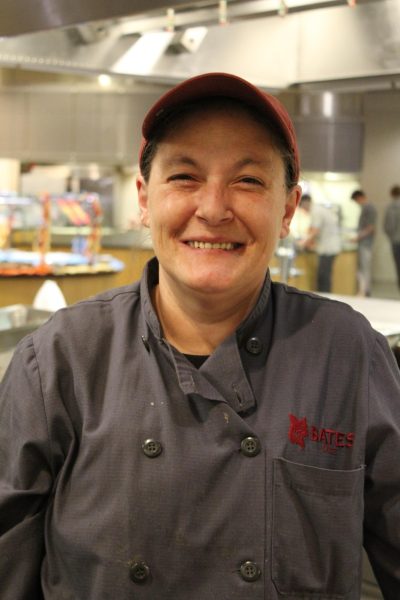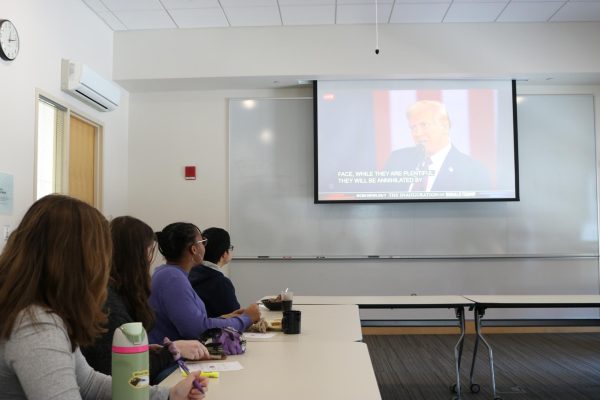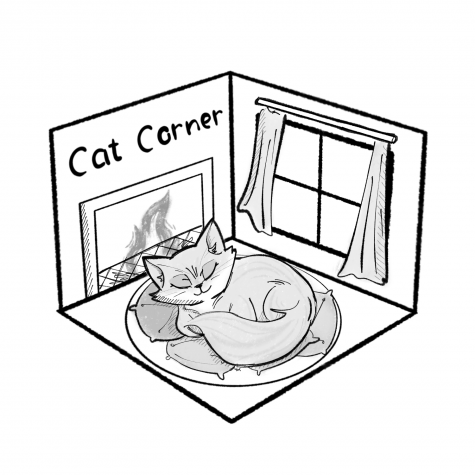Exploring the Arcade
“The quietness and small size of the Arcade allows for a more consistent and socially protective space, since your table and its numbers are not on public display.” The Arcade provides a different physical, and aesthetic, space for students to dine.
Walking into Commons is likely the most consistent action in my life. I enter and walk towards the area I usually sit in and find a friend to eat with. This experience is distinct for everyone, as different students call different corners of the dining hall their home. The reasoning behind sitting in varying eating areas, though, is a response to Bates culture at large.
Anna Pua’ala, a junior, called the larger part of Commons “the outside” in comparison to the Arcade, which feels inclusive and calm. Pua’ala also noted that the Arcade has more people of color regularly dining inside its cozy walls. This sentiment was felt around Pua’ala’s table, as many of the students sitting with her felt that the larger portion of Commons was overwhelmingly white.
Carlos Alvarez, a sophomore, echoed this point, saying it feels isolating to constantly eat around crowds of predominantly white tables.
Alongside its inclusive feel, the Arcade also provides a space for language diversity, as students who feel overwhelmed by the round tables close to the food can feel more comfortable speaking their native languages in a more quiet and private space. This sense of comfort provides a room for community to flourish more easily, as friends and friends of friends who want a private table or booth find the Arcade a reliable dining option.
Jared Miranda-Ogaz, a junior, explained that he and two friends all eat at the Arcade during lunch because it’s a great space to continue his “Japanese mindset” after class. Miranda-Ogaz stated that it’s the perfect nook to continue speaking and thinking in Japanese, as he is both separate from the loud, English-speaking crowds outside of the Arcade and surrounded by others who speak the language. “It’s also nice to meet new people and people who I don’t hang out with as much.” Miranda-Ogaz says that the larger space in Commons is better for people-watching.
Someone at the table mentioned anxieties around table sizes, which I have also experienced. “Imagine you’re sitting alone, and someone asks to borrow a chair.” These interactions are in many ways forced by the larger space in Commons, as it houses so many different types and sizes of social interactions. The quietness and small size of the Arcade allows for a more consistent and socially protective space, since your table and its numbers are not on public display.
Miranda-Ogaz mentioned that eating alone is best in the Mezzanine, while someone else at the table added that the Arcade is better for a quick meal since you’re sitting so close to where students clear their dishes.
Eating at the Arcade during lunch was very fun. The conversations around me seemed lively, but I was not totally consumed by the noises around my table. I felt like I was able to do some last-minute Monday afternoon homework much easier than in the Mezzanine. Also, the booths were very nice. As catalysts for a vital aspect of socializing at Bates, Commons tables are more important than you may first imagine.
Your donation will support the student journalists of Bates College and help us cover our annual website hosting costs.








